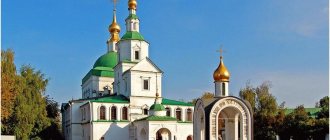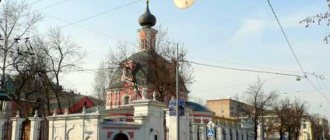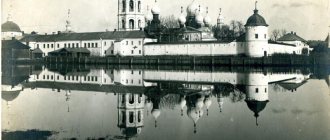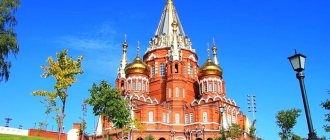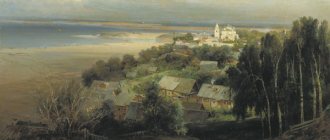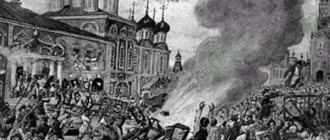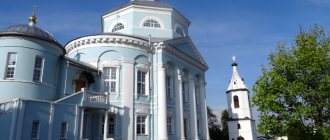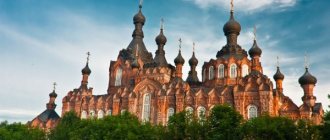Mir
Russia Moscow region Vidnoye Catherine Hermitage Map loading in progress...
{"format":"leaflet","minzoom":false,"maxzoom":false,"limit":50,"offset":0,"link":"all","sort":[""], "order":[],"headers":"show","mainlabel":"","intro":"","outro":"","searchlabel":"\u2026 \u0441\u043b\u0435\ u0434\u0443\u044e\u0449\u0438\u0435 \u0440\u0435\u0437\u0443\u043b\u044c\u0442\u0430\u0442\u044b","default":"","import-annotation":false,"width ":"auto","height":"350px","centre":{"text":"","title":"""link":"""lat":55.5369299999999981309883878566324710845947265625,"lon": 37.6665899999999993497112882323563098907470703125,"icon":""},"title":"","label":"","icon":"","lines":[],"polygons":[],"circles":[ ],"rectangles":[],"copycoords":false,"static":false,"zoom":8,"defzoom":14,"layers":["OpenStreetMap"],"image layers":[] ,"overlays":[],"resizable":false,"fullscreen":true,"scrollwheelzoom":true,"cluster":false,"clustermaxzoom":9,"clusterzoomonclick":true,"clustermaxradius":80, "clusterspiderfy":true,"geojson":"","clicktarget":"","showtitle":true,"hidenamespace":false,"template":"","userparam":"","activeicon": "","pagelabel":false,"ajaxcoordproperty":"","ajaxquery":"","locations":[{"text":"\u003Cb\u003E\u003Ca href=\"/palomnik/%D0% 95%D0%BA%D0%B0%D1%82%D0%B5%D1%80%D0%B8%D0%BD%D0%B8%D0%BD%D1%81%D0%BA%D0%B0% D1%8F_%D0%BF%D1%83%D1%81%D1%82%D1%8B%D0%BD%D1%8C\» title=\»\u0415\u043a\u0430\u0442\u0435\u0440\ u0438\u043d\u0438\u043d\u0441\u043a\u0430\u044f \u043f\u0443\u0441\u0442\u044b\u043d\u044c\u003E\u0415\u043a\u0430\u0442\u 0435\u0440\u0438\u043d\ u0438\u043d\u0441\u043a\u0430\u044f \u043f\u0443\u0441\u0442\u044b\u043d\u044c\u003C/a\u003E\u003C/b\u003E","title":"\u0415\u043a \u0430 "Link":"""lat":55. 5369299999999981309883878566324710845947265625 ,"lon":37.6665899999999993497112882323563098907470703125,"icon":""}],,"imageLayers":[]}
55.544514; 37.672145
Russia, Moscow region, Leninsky urban district, Vidnoye, Rastorguevo district
Vidnoye, Moscow region
Russia
Telephone:
+7 (495) 541-22-54
Catherine's Monastery (official name - St. Catherine's Monastery) is a functioning male Orthodox monastery on the outskirts of the city of Vidnoye (former village of Rastorguevo). It arose under Tsar Alexei Mikhailovich as a women's monastery. In 1931 closed. Until 1934, a children's educational colony operated on the territory, and in 1935-54. here was the notorious Sukhanovka prison, where N. I. Ezhov and L. P. Beria worked. In 1938-1953 it was occupied by the secret political prison of the NKVD, the so-called. "Sukhanovka", then belonged to the police school. Reopened in 1991.
St. Catherine's Monastery today
St. Catherine's Monastery (Vidnoe) is a solemn and majestic church complex, surrounded by a modest white fence with 2 turrets on the corners. The close location to Moscow does not prevent its inhabitants from leading a quiet and secluded life, following the strict monastic rules.
On major church holidays, during church services and Sunday school classes, the monastery opens its doors to its parishioners. At other times, the brethren are busy with their daily affairs: they serve God, run the household, which allows them to provide the monastery and its inhabitants with everything necessary for life. The life of the monastery was not always quiet, measured and gracious. Prosperities and declines have plagued the desert throughout its 400-year history.
The sovereign's brainchild
As in most Russian monasteries, the earliest buildings of the Catherine Hermitage were wooden, but already in 1664 the construction of stone structures began. From archival documents it is known that during the first three years all construction work was led by Ivan Kuznechik, a rifleman in the regiment of boyar Artamon Matveev. Within three years, the construction of the main buildings was completed and their interior decoration began. It is worth noting that the money for this charitable cause was taken not from the treasury, but from the personal funds of the sovereign. Thus, the Catherine Monastery created near Moscow, photos of which are presented in the article, is rightfully considered his brainchild.
Story
St. Catherine's Monastery is located 5 km south of Moscow on the outskirts of the city of Vidnoye. It owes its foundation to a miraculous sign. According to legend, 400 years ago, Tsar Alexei Mikhailovich Romanov, popularly nicknamed the Quietest, loved to hunt in the picturesque places of the Ermolinskaya Grove. The Emperor was a God-fearing man, helped the poor, defended the weak and offended.
He attended church services every day, restored churches destroyed during troubled times and glorified the saints. He especially revered the Great Martyr Catherine. On the night of December 7, 1658 (from this date the calculation of the monastery begins), it was she who appeared to him in a dream at one of the sites in Ermolina Grove and announced the birth of his daughter.
Returning home, Alexei Mikhailovich named his newborn daughter Catherine, and at the site of the miraculous phenomenon he ordered the founding of a monastery, which was named St. Catherine’s Hermitage.
First, a temporary wooden church and 2 houses for the clergy were built. They didn't stay long. In 1664 they were dismantled and the construction of stone buildings began: a temple building in honor of St. Catherine and 2 houses for the monastery inhabitants and the royal servants of advanced age. Construction proceeded quickly. Brick was delivered from Moscow, lime from Kolychevo, stone and piles from Ermolino, Lopatino and Myachikovo.
Alexey Mikhailovich personally supervised the construction of the holy monastery and donated money for its speedy arrangement. The Tsar gave the monastery the miraculous icon of St. Catherine. From Princess Ekaterina Alekseevna, the monastery was presented with a miraculous image of St. Antipas. In 1679, a stone church building was erected with 2 chapels: St. Nicholas and St. Sergius of Radonezh. 7 bells were purchased for the bell tower.
The monastery was built and maintained with funds allocated from the royal treasury. Everything changes at the beginning of the 18th century. Funding for the monastery has practically ceased. During the reign of Emperor Peter I, salaries for the inhabitants of the desert were delayed or not received at all. The monks were very hungry, begging in the surrounding villages, and even church services stopped.
The years of decline of the monastery gave way to times of prosperity. The reign of Catherine the Great became years of rapid prosperity for the desert. At that time, the abbot of the monastery was Archimandrite Melchizedek, who ruled the monastery for 17 years from 1784. Under his leadership, dilapidated monastery buildings and cells were restored.
It was under him that a new Catherine Cathedral with several altars and a gate church in honor of Demetrius of Rostov were erected, and the old Catherine Church was reconsecrated in honor of Peter and Paul. In 1802, Abbot Melchizedek was appointed abbot of the Vysotsky Monastery in Serpukhov, which he led until his death. However, he asked to be buried in the Catherine Monastery, which was done. His grave is located near the right wall of the cathedral.
Another outstanding builder and renovator of the monastery was Hieromonk Mimsail, appointed rector of the monastery in 1842. Under him, expensive utensils were purchased, the domes on the bell tower and the Catherine Church were gilded, 2 hotels, 2 cell buildings, and outbuildings were built. All this has been preserved (albeit in a modified form) to this day. Hieromonk Misail was buried on the south side of St. Catherine's Cathedral.
XIX century for the monastery it was calm and prosperous. At that time, up to 40 brethren served here. Even during the war of 1812 the monastery was not damaged. The French did not destroy it, they only shot at the bells. And the next century became tragic for the monastery. With the advent of the new government, the period of prosperity for the monastery ends.
In 1918, the inhabitants of the Catherine Monastery were transferred to other monasteries, and the building was given to the nuns of the Krasnostok Monastery, which during the First World War remained in enemy-occupied territories. In 1931, the nuns also had to leave the monastery because it was ordered to close. From 1939 to 1953, one of the most brutal NKVD prisons, “Special Object No. 110” or “Sukhanovka,” was located within the walls of the temple.
Thousands of people were tortured and killed here during the years of repression. The organizer of the prison was Yezhov, People's Commissar of Internal Affairs. Ironically, in 1939, Yezhov himself was arrested and spent 11 months in Sukhanovka. Here in 1940 he was shot. The execution site was set up right in the temple. The bodies were taken to the Butovo training ground or to Kommunarka. After the prison, the desert walls housed first a prison hospital, then a police training center.
Over all these years, the cathedral was looted and destroyed. In the 70s In the last century, restoration began on the territory of the monastery under the leadership of S.P. Orlovsky, but thorough work to restore the monastery was not carried out. After the celebration of the 1000th anniversary of the baptism of Rus', the revival of the monastery begins. First, part of the temple was transferred to the church, and from 1992, all other buildings of the monastery began to be transferred in stages.
Hieromonk Tikhon Nedosekin was appointed rector of the monastery (now he is known as Bishop Tikhon, Bishop of Vidnovsky), who began restoring the St. Catherine’s monastery.
St. Catherine's Monastery (Vidnoye) was in a deplorable state. There was a garage on the 1st floor of the cathedral, so all the paintings and plaster have not been preserved. Some of the buildings were broken; roofs, windows, and doors were missing. There were rubbish heaps all around; not even grass grew in the area, so the entire top layer of soil had to be removed.
During excavation work and excavation of the foundation of the temple and cell buildings, tombstones were discovered that were once located in the old monastery cemetery, and part of the burials in the destroyed crypts. Everything was gradually restored, a new church of St. Tikhon was opened, and monastic life was resumed.
Abbots
- Varlaam (1690 - ?)
- Joasaph (1713)
- Gabriel (1713 - 1715)
- Savvaty (1715 - 1722)
- Gabriel (1722)
- Peter (1742)
- Sergius (1743 - June 1748)
- Pitirim (no later than 1751 - 1752)
- Nicanor (1752 - March 1754)
- Nectary (1754)
- Nifont (Mikhailov) (April 1755 - December 1759)
- Pachomius (Ivanov) (January 1760 - January 1769)
- Barnabas (January 1769 - 1770)
- Ambrose (1770 - July 1771)
- Irinarch (August 1771 - March 13, 1779)
- Peter (March - September 1779)
- Victor (Alekseev) (September 1779 - June 1780)
- Auxentius (July 1780 - March 1784)
- Melchizedek (March 30, 1784 - May 1802)
- Gerasim (June 1802 - December 1806)
- Dosifey (Golenishchev-Kutuzov) (January 3, 1807 - October 1809)
- Dorofey (October 11, 1809 - December 1, 1822)
- Nazariy (Bordonosov) (1823 - 1829)
- Melchizedek (June 2, 1829 – July 1842)
- Misail (Egorov) (July 15, 1842 - October 15, 1854)
- Methodius (Sukhotin) (October 16, 1854 - January 1865)
- Jonah (May - November 1865)
- Barsanuphius (November 3, 1865 - 1870)
- Arseny (Egorov) (1870 - 1891)
- Stefan (Zvarygin) (January 1891 - August 1893)
- Vassian (Smirnov) (December 17, 1893 - January 16, 1894)
from 1931 to 1992 - the monastery was closed
Architecture and interior decoration of the temple
The center of the monastery complex is St. Catherine's Church. The architecture of the cathedral building, built under Archimandrite Melchizedek, is designed in the style of classicism. It is decorated with classic porticoes with columns and a wide porch. There are wonderful mosaic icons on the walls of church buildings.
At one time, it was added to the old one, erected under Alexei Mikhailovich. It turned out to be a single church building with a 2-story altar. On the ground floor there is an altar in honor of St. Catherine, on the second - in honor of the Dormition of the Virgin Mary.
In total there are 5 chapels in the cathedral:
- St. Catherine (memory day is celebrated on December 7);
- Assumption of St. Virgin Mary;
- Peter and Paul;
- Sergius of Radonezh;
- Nicholas of Myra.
The amazingly beautiful iconostasis made of mahogany has been restored in the cathedral. The craftsmen recreated it based on archival documents: descriptions, original drawings.
Monastery maintained by the state
In the first decades after its foundation, the monastery was entirely supported by the state, since it did not yet have any assigned villages or land that could provide residents with a constant income. The only source of livelihood was the so-called ruba - regular cash transfers from the Order of the Grand Palace.
This was a kind of salary for the monks who constantly prayed for the Tsar and the Fatherland. They began to pay it at the behest of the same Alexei Mikhailovich. However, from archival documents it follows that prayers were offered regularly, but money sometimes arrived with great delays, and then the brethren of the monastery, according to the compiler of the chronicle, “fell into great need.”
Architectural ensemble
Today the monastery complex includes:
- Catherine's Cathedral with 5 chapels;
- the Church of the Apostles Peter and Paul (in 1995, during restoration work in the temple, the false ceiling was removed, revealing well-preserved 19th-century paintings underneath);
- a temple dedicated to St. Tikhon, Patriarch of Moscow;
- gate church in the name of St. Demetrius of Rostov;
- a small wooden temple of John the Warrior;
- 3 farmsteads;
- brotherly burial vault;
- the bishop's and fraternal buildings (the bishop's building consists of 2 buildings from different periods without any architectural accents).
On the south side of the monastery there is a large gate, which was originally the “back” gate. In 1869, after the completion of the construction of the Moscow-Kursk railway, the main entrance to the monastery was moved from the north to the south. They decorated it with beautiful wrought iron gates.
To the right of the gate is a church building with a green dome and a dark copper crown. This is a house church in honor of St. Tikhon, who in difficult and difficult times (1917) became a spiritual leader and mentor for the Orthodox people.
Construction of the Tikhonovsky Church began in 1994, and in 2004 it was consecrated. Icons for the temple erected in honor of St. Tikhon, were painted by artists of St. Catherine’s Monastery in the early 2000s. According to legend, the church stands exactly on the spot where Alexei Mikhailovich built a chapel. In the courtyard of the temple there is a brotherly tomb. It contains the remains of those who were buried in the past on the territory of the monastery.
A memorial cross and a granite slab were installed nearby in 2004 as a memory of the innocent victims of political repression and tragedies of the 20th century.
Improvement of the monastery in the second half of the 18th century
It is characteristic that during the reign of Empress Catherine II, who, as is known, pursued a policy of secularization, that is, the exclusion of monastic and parish lands into state ownership, the Catherine Hermitage not only did not suffer, but further strengthened its well-being.
Thus, in the 60s of the 18th century, the main monastery cathedral was erected and the gate church was renovated, several fraternal buildings were built, and the territory was surrounded by a stone fence. Such large-scale construction work was possible thanks to the assistance of the outstanding religious figure of that era, Metropolitan of Moscow Platon (Levshin) and the tireless efforts of the abbot of the monastery, Hieromonk Melchizedek.
Shrines and relics
St. Catherine's Monastery (Vidnoye) stores many ancient icons, relics of the venerable martyrs, Optina and Kiev-Pechersk elders. In 2010, a piece of her relics was brought from the Sinai Monastery.
Historical reference. According to legend, St. Catherine lived in the 3rd century. in Alexandria of Egypt, where she was beheaded for refusing to renounce Christianity; her relics mysteriously disappeared. Only in the VI century. in the Sinai monastery (this is where the burning bush grows) the monks had a revelation that the relics of St. Catherine's are located nearby on one of the mountains. There they found the shrine.
Their icons, kept in the monastery, are especially revered by the Czestochowa Icon of the Mother of God. It is notable for the fact that it is one of 28 icons painted by St. Luke (the same one who painted the first image of the Blessed Virgin).
Interesting. The icon came to St. Catherine's Monastery in an unusual way. A man came and brought 3 boards, dark from time, which were fragments of one icon. They were taken to the icon-painting workshop. When the time came to work with them, they began to clear them and realized that this was not an ordinary icon, but an image of the Mother of God of Czestochowa.
Interesting Facts
Among the attractions of the monastery are the burning bush bush and a healing spring.
Burning bush
One of the pilgrims brought a small twig from that same biblical fireproof bush. Despite the fact that the climate near Moscow is unsuitable for this plant, the branch not only took root well, but also grew. When the relics of St. were brought to the monastery in 2010. Catherine, the bush suddenly bloomed with tiny pink and purple flowers. The miracle is that neither before nor after this event the plant no longer pleased with its flowering.
Monks protect the plant. Before the onset of winter, the bush is carefully trimmed and covered with a greenhouse. Leaves from cut branches are carefully dried and sold as a relic along with the Burning Bush icon.
Healing spring
Just a kilometer from the monastery is the Sukhanovskaya estate. On its territory there is a healing spring, which (according to many) cures various diseases of the musculoskeletal system of the body. The source, like the monastery itself, was in a neglected state for many years. In 2015, they began to put it in order: they strengthened the path to the spring, laid out steps, and made a platform.
The recovery continues. It is planned to install a roof, benches and a stand for containers over the healing spring. The current owners of the estate have organized a small hotel for visitors where they can stay.
Social work, Sunday school
There is a Sunday school at the monastery. It first began its work in 2006, but began to function fully only in 2007. The school has 3 children's groups, which are attended by children from 3 to 15 years old. There is also an adult group.
Its main goal is to provide the necessary spiritual knowledge to guide children and adults in life.
Here they study the Law of God and the Church Slavonic language, organize pilgrimage trips to holy places, excursions to museums, and walks in the forest. In addition, divine services are held in the monastery every day, the monks guide prisoners on the true path, they cooperate with the orphanage of the city of Vidnoye, and a center for spiritual and moral education is being built at the expense of parishioners and benefactors.
Service schedule, operating hours
The rules of the monastery are strict (services here last longer), but there are always parishioners.
Schedule of services:
| Days of the week | Services | Time |
| Monday-Saturday | Divine Liturgy | 8 hours |
| evening service | 16 hours | |
| Wednesday | prayer service with akathist before the image of the Mother of God of Czestochowa | after the liturgy |
| Thursday | prayer service with akathist (after the liturgy) to St. Nicholas the Wonderworker of Myra | after the liturgy |
| Sunday | water-blessing prayer | 8 hours |
| Divine Liturgy | 9 o'clock | |
| prayer service with akathist to St. Great Martyr Catherine | 16 hours |
Information for pilgrims
All necessary information about the work of the monastery should be clarified in advance.
Contacts:
- Email address: [email protected]
- Phone: +7 (495) 54-122-54.
Hotel
St. Catherine's Monastery (Vidnoe) receives pilgrims. There is a hotel on site where you can stay for a while.
There are double and multi-bed rooms with all the necessary conditions for living:
- there is access to the Internet;
- free parking;
- calling a taxi.
The cost of accommodation for 1 day in a double room is 3,500 rubles, in a multi-bed room – 500 rubles. (breakfast included).
All clarifications on accommodation issues can be obtained by calling:
- +7 (999) 92-583-96;
- +7 (977) 70-871-90;
- +7.
To check into a hotel, you must notify your arrival in advance and make a reservation.
Church shop
There is a church shop on the monastery territory every day from 9 a.m. to 7 p.m. (you can call by phone). You can purchase various church literature there. Incense, items necessary for baptism and burial ceremonies, and a wide selection of icons are also sold here. The store has a department where you can buy “healthy” food products: Cahors, honey, herbal preparations, teas, cereals. The products are natural and produced in the monastery farmsteads.
Mosaic workshop
There is a workshop at the temple where you can order mosaic icons. 18 beautiful mosaic icons decorate the outer walls of the monastery buildings.
St. Catherine's Monastery, Vidnoye has a mosaic workshop.
During the restoration of the monastery, the novices mastered the art of mosaic; all the wall mosaic icons were made on their own. You can order a mosaic icon in the monastery workshop (phone 4).
Museum
The museum, organized in the monastery in 2010, is the second most visited after the Catherine Church. Museum exhibits telling the history of the monastery are constantly replenished and updated.
Where is it, how to get there
Address: 142702, Russia, Moscow region, Leninsky urban district, Rastorguevo district, Vidnoye city, Petrovsky proezd, vl. No. 21. Coordinates: 55.536538, 37.665708.
You can go to the monastery by electric train or metro, and then by bus.
| By electric train | Metro | ||
| Kind of transport | Stop | Kind of transport | Stop |
| Electric train (from Paveletsky station) | "Rastorguevo" | Bus routes 471, 364 from the station. "Domodedovskaya" | "Rastorguevo" |
| Bus routes: 379, 2, 59 | "Police School" | Then by buses 379, 59, 2 | "Police School" |
The monastery, which survived the horrors of Sukhanov, and on whose land the burning bush took root, now brings only grace and peace. Therefore, not only parishioners, but also guests visit the St. Catherine’s Monastery in the city of Vidnoye to admire the beauty of these places, cleanse the soul, listen to instructive sermons and pray for the innocent Russian new martyrs.
Cottage community near the monastery walls
Today, many people are attracted to the city of Vidnoye by the cottage community being built near the Catherine Hermitage, which has a number of undeniable advantages. Located on the edge of a relict pine forest, it is at the same time only 6 kilometers from Moscow. An important role is also played by the expressways passing nearby, such as the Kashirskoye and Simferopol highways, as well as highway No. 40. Along them you can drive from the capital to the Catherine Hermitage in a matter of minutes. Houses with plots are sold at relatively low prices, corresponding to the economy class. The construction of the village is also a welcome development for the monastery, since many new residents will be among its regular visitors.
